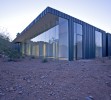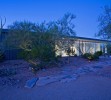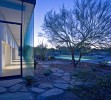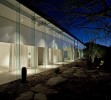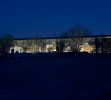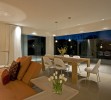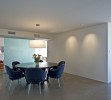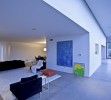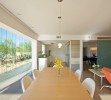House of the Month: A Crystal in the Desert by Circle West Architects
Old is made new again – and made greener – in this Phoenix-area home, designed by Circle West Architects.
Is an architect's toughest client himself? Not when he has a crystal clear vision for his family’s home. Phoenix-based architect Peter Koliopoulos, AIA, founder and president of Circle West Architects, drew on his Miesian training at the Illinois Institute of Technology to transform a 30-year-old concrete block and stucco home in the residential neighborhood of Paradise Valley into a modern crystal that rises from the revegetated desert landscape.
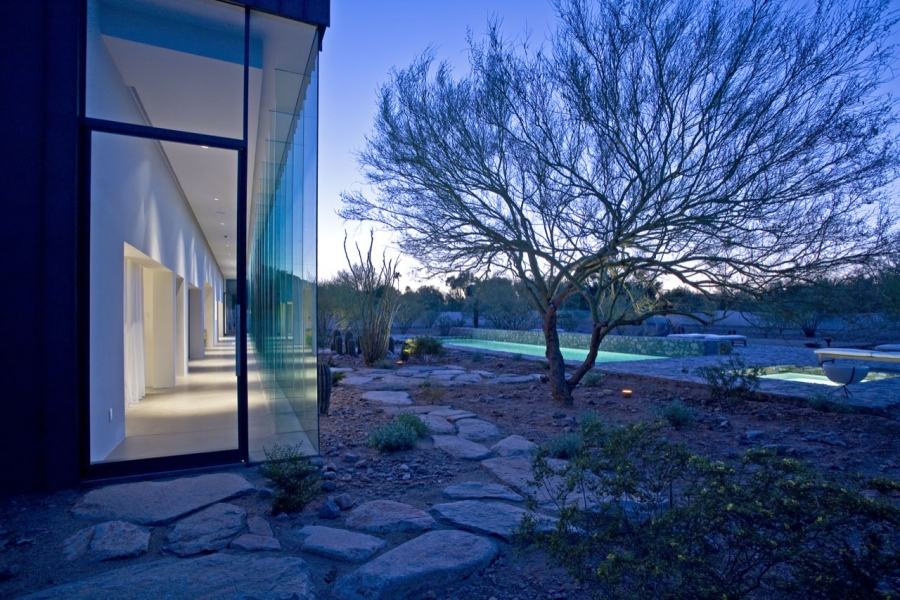 Image courtesy of Circle West Architects
Image courtesy of Circle West Architects
With a quick glance at the completed project, most would assume that the house is brand-new, but Koliopoulos managed to "recycle" 75% of the original structure. He opened the north and south facades and to gain some valuable additional square footage, and he wrapped these new spaces with a sleek glass curtain wall framed by vertical standing-seam zinc metal siding. Koliopoulos rearranged the interior by rerouting the circulation, which originally followed a traditional central hallway, along both of these edges. The additions’ ceilings are higher than the original ceilings –12' as opposed to 8' – creating a sense of expansion and compression that establishes a flow throughout the home.
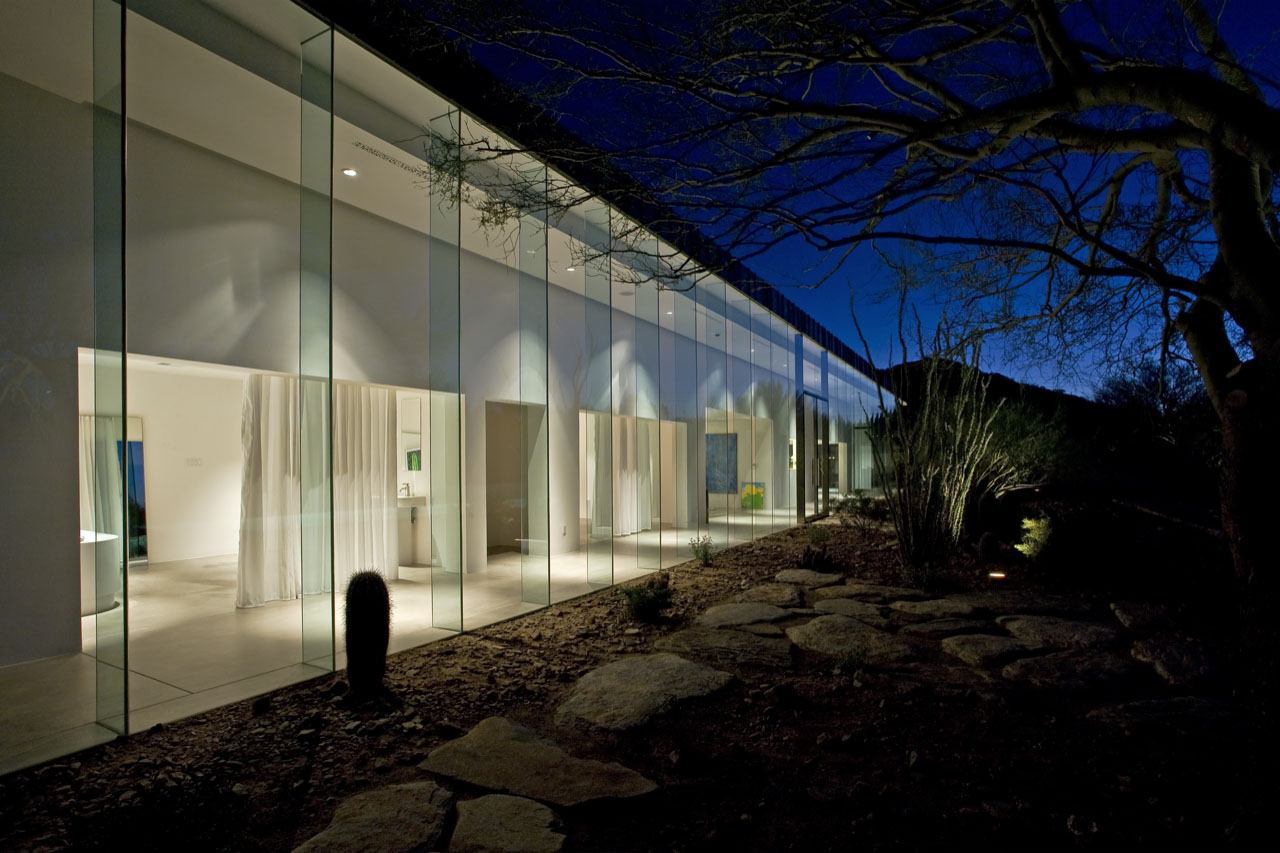
The new expanses of glass allow natural light to flood the home while also framing the stunning desert scenery. “We’re always connected with the exterior, which becomes a living art of a landscape that we experience continuously as we go about living in the home,” Koliopoulos shares. The glass curtain wall was custom-made by a local fabricator and features a structural glass mullion system. The mullions, which are 12" deep and run the full wall height of 13', reinforce the glass panels against lateral and wind loads. The roof of the home is supported by columns and beams independent of the glazing. An overhang protects the south facade from the harsh summer sun but still allows low-angle winter rays to penetrate.
Inside the home, Koliopoulos kept the finishes clean and simple so the focus remains on the landscape. He peeled away the existing floor tile to expose the original concrete slab, which was then ground down and finished with a clear sealer. The concrete floor serves as a thermal mass – it stores heat from the sun’s rays that filter through the glass during the day and then radiate up to keep the home comfortable on cool desert nights. Natural light is adequate to illuminate the home in the daytime, but at night it glows from within thanks to energy-efficient LEDs. On the interior walls, which are all painted white, hang several pieces of artwork created by local students.
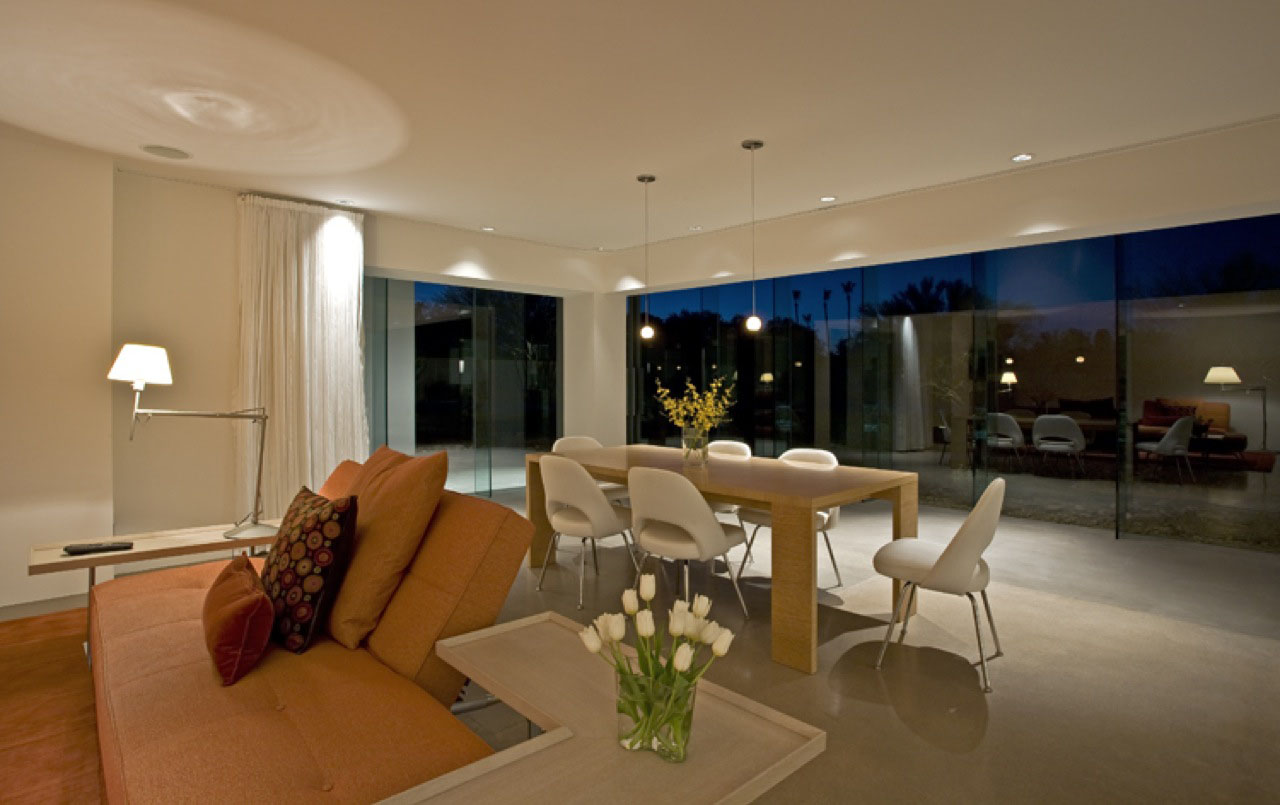
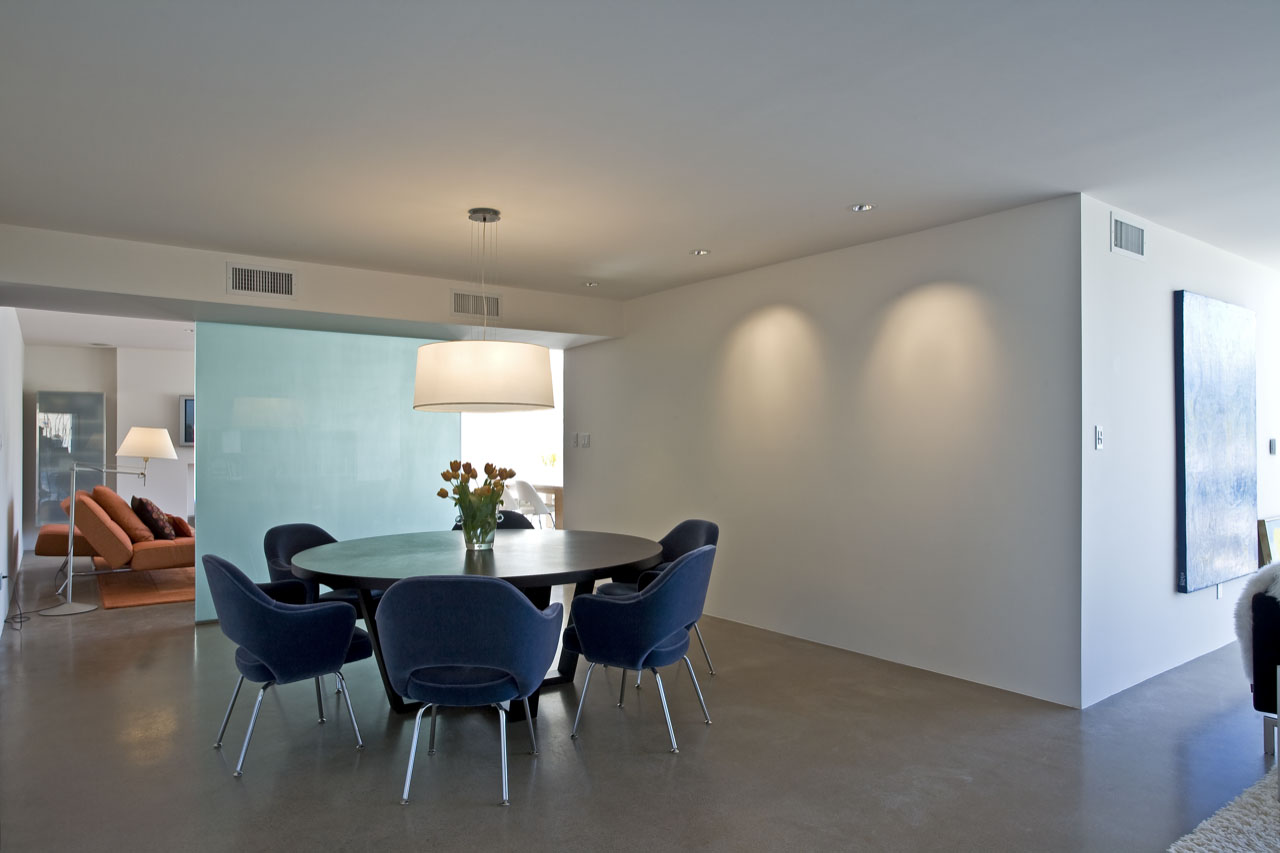
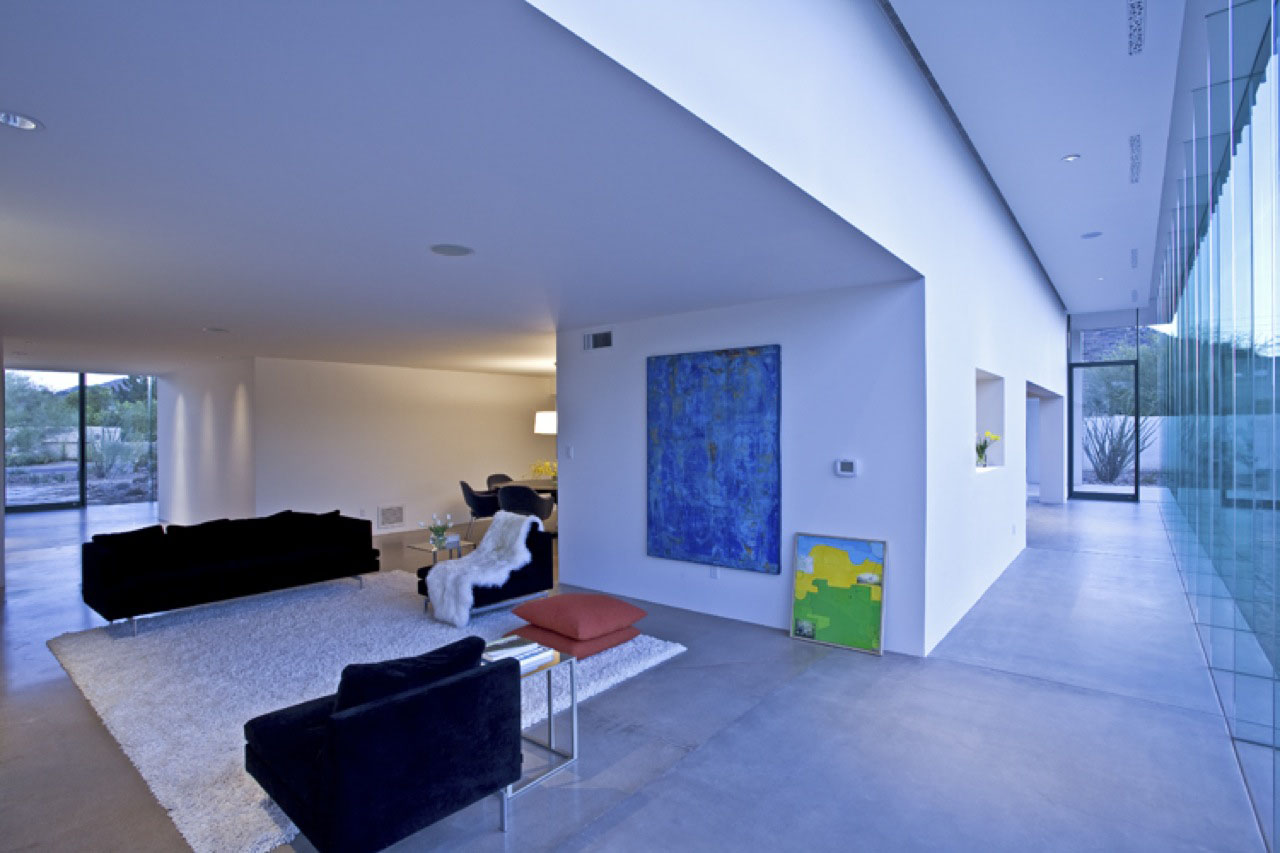
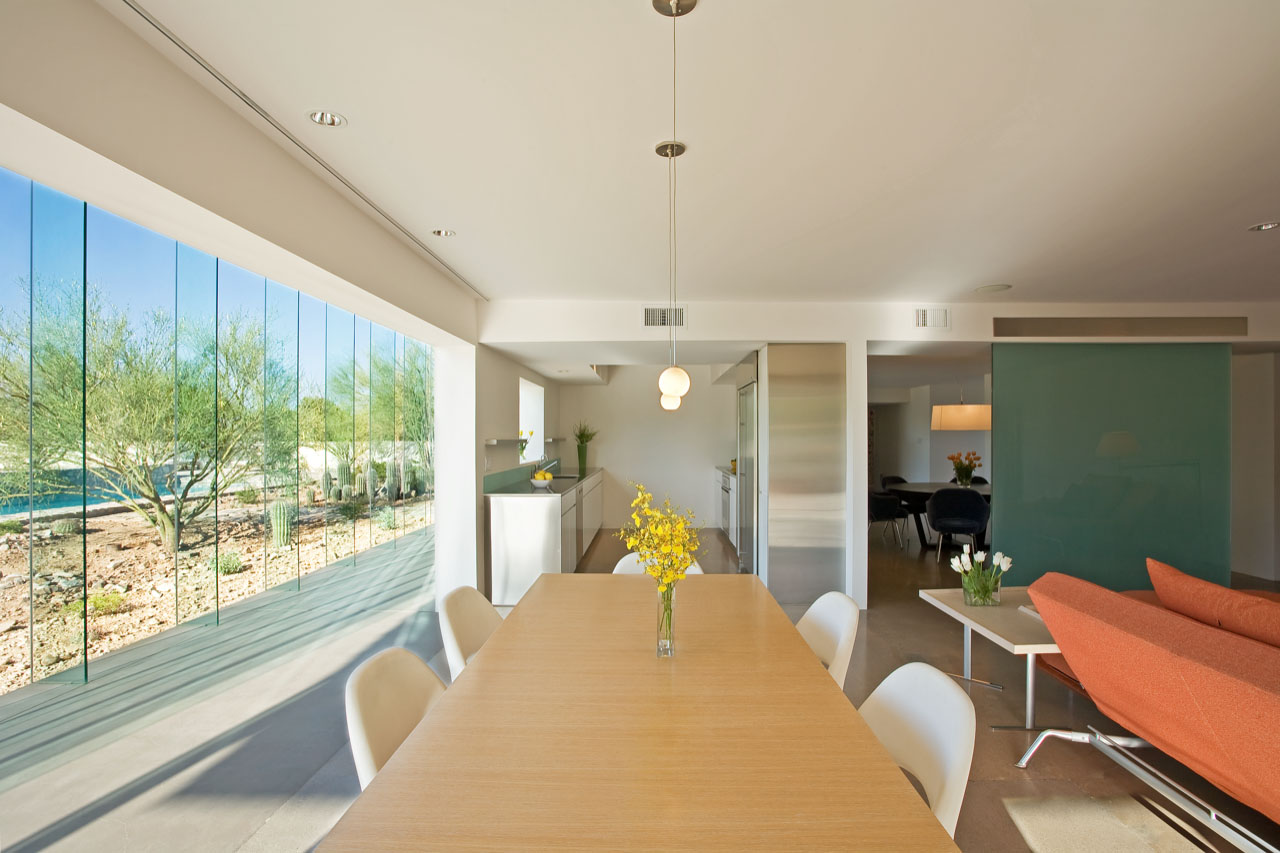
When Koliopoulos purchased the home, most of the landscaping on the one-plus acre property consisted of non-native, high-water-use plants. He replaced them with plants and trees indigenous to the Sonoran Desert that naturally require much less water. Koliopoulos selected a single species of tree, the Palo Verde. The Palo Verde trees, which are full and shrubby and explode with yellow blossoms for several weeks each spring, create a privacy buffer from nearby roads. Stone pavers and gravel round out the natural palette. The little water needed by this low-maintenance landscape is supplied by an underground drip irrigation system fed by rainwater captured from the roof and the rest of the property, minimizing stormwater runoff.
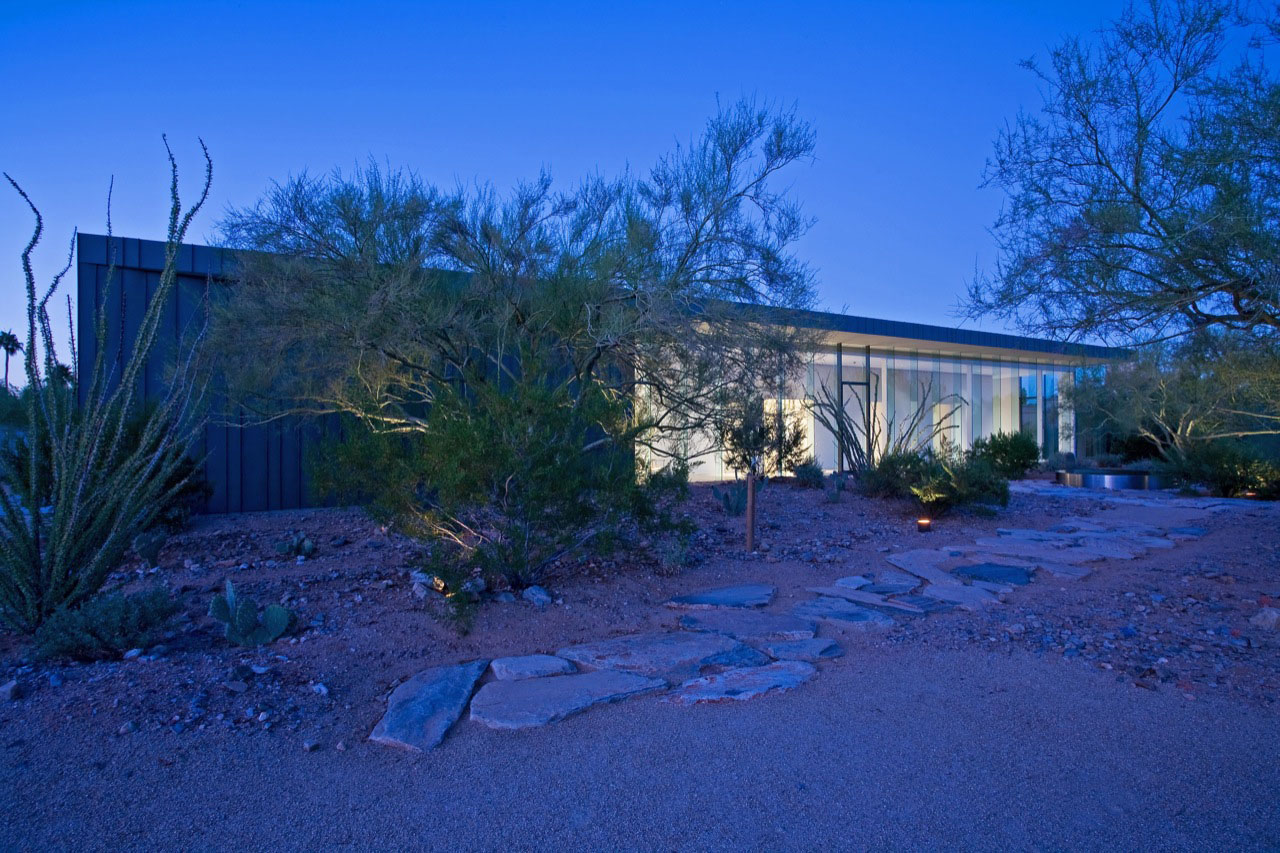
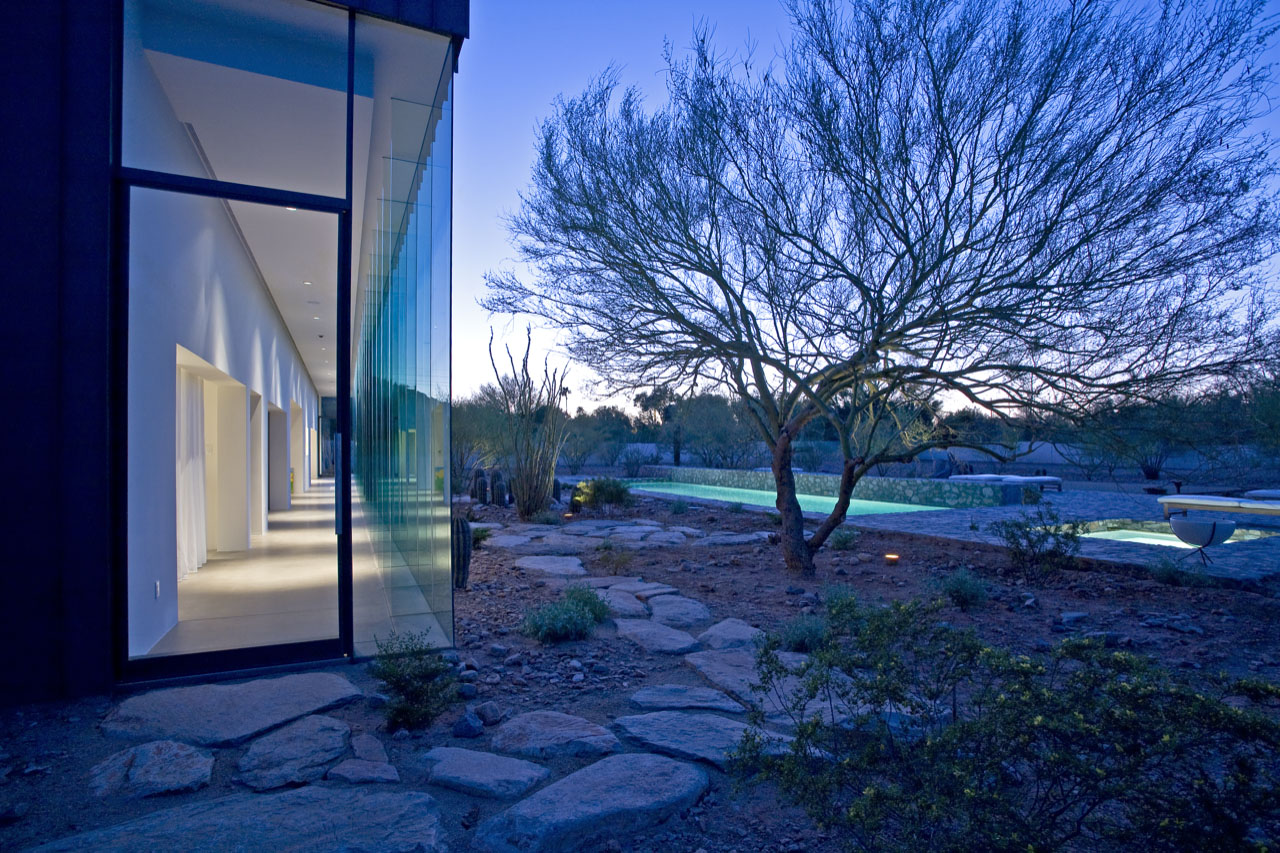
This textured landscape creates a striking contrast with the clean lines of the house. “The desert affords us great opportunities to experiment and define a high standard for modern architecture,” believes Koliopoulos, who uses the home as a case study and educational tool, often providing tours to those who are curious. What's the most rewarding aspect of living in such a unique home? “Seeing how friends and family react to the spaces that you’ve designed and live in.” He especially enjoys the looks of surprise and awe from his kids’ friends, who are accustomed to more traditional architecture.
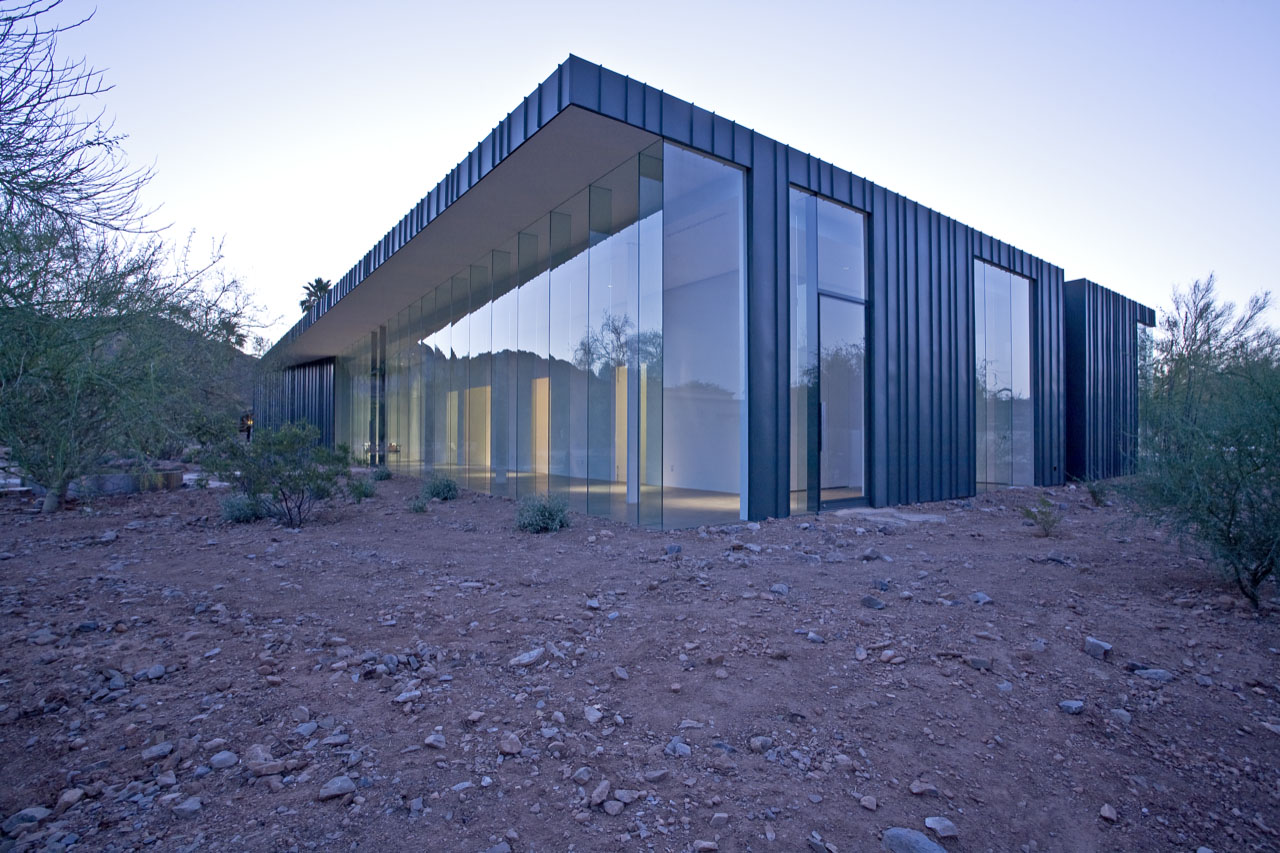

Murrye Bernard
Murrye is a freelance writer based in New York City. She holds a Bachelor's degree in Architecture from the University of Arkansas and is a LEED-accredited professional. Her work has been published in Architectural Record, Eco-Structure, and Architectural Lighting, among others. She also serves as a contributing editor for the American Institute of Architects' New York Chapter publication, eOculus.
Website: www.murrye.com
